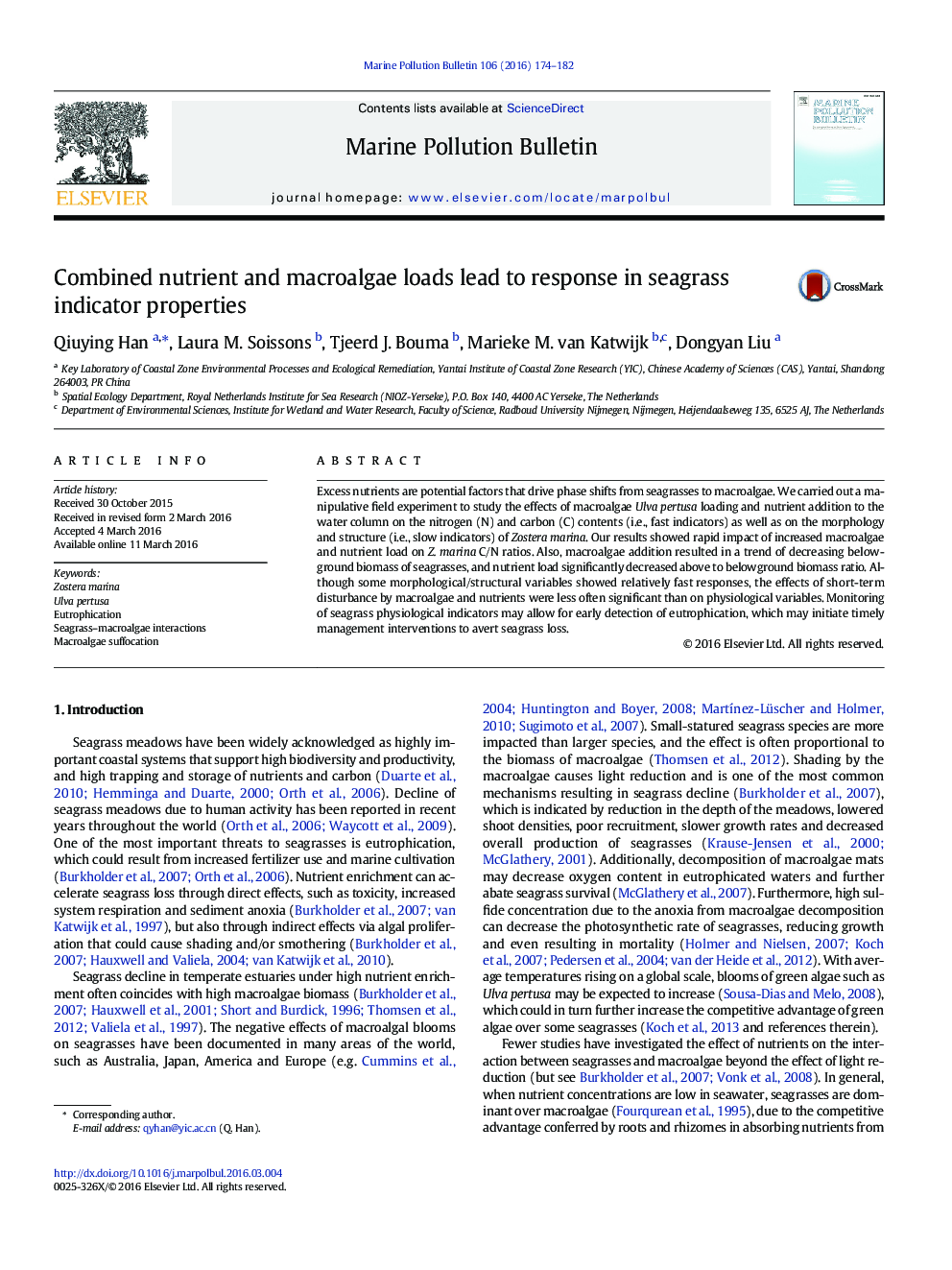| Article ID | Journal | Published Year | Pages | File Type |
|---|---|---|---|---|
| 4476476 | Marine Pollution Bulletin | 2016 | 9 Pages |
•Two type indicators are used to evaluate the response of seagrasses to macroalgae cover and nutrients.•Zostera marina C/N ratios rapidly response to increased macroalgae and nutrient load.•Macroalgae shading results in a trend of decreasing belowground biomass of seagrasses.•Nutrient load significantly decreases above to belowground biomass ratio.•Seagrasses monitoring should include physiological indicators to allow for early detection of eutrophication.
Excess nutrients are potential factors that drive phase shifts from seagrasses to macroalgae. We carried out a manipulative field experiment to study the effects of macroalgae Ulva pertusa loading and nutrient addition to the water column on the nitrogen (N) and carbon (C) contents (i.e., fast indicators) as well as on the morphology and structure (i.e., slow indicators) of Zostera marina. Our results showed rapid impact of increased macroalgae and nutrient load on Z. marina C/N ratios. Also, macroalgae addition resulted in a trend of decreasing belowground biomass of seagrasses, and nutrient load significantly decreased above to belowground biomass ratio. Although some morphological/structural variables showed relatively fast responses, the effects of short-term disturbance by macroalgae and nutrients were less often significant than on physiological variables. Monitoring of seagrass physiological indicators may allow for early detection of eutrophication, which may initiate timely management interventions to avert seagrass loss.
